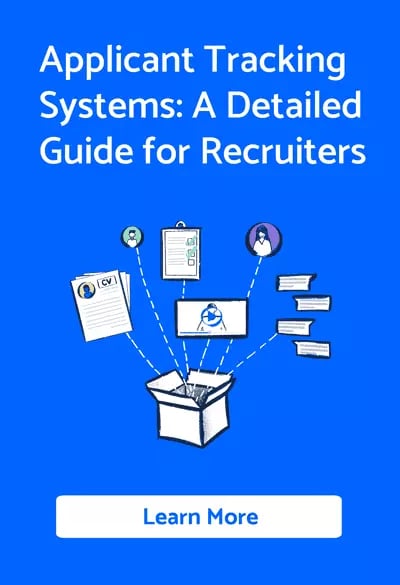Welcome to a crucial discussion that could be the make-or-break for your venture: the world of product development.
Now, let's talk numbers because they bring home the point rather sharply.
According to Harvard Business School, approximately 80% of new products don't make the cut; they either go unnoticed or eventually get pulled from the market.
Why do so many products fail?
How do you beat the market competition?
Well, the issues are complex and varied. They range from not having adequate resources, to misjudging market needs, to getting tangled in the knots of regulatory compliance.
These challenges can bring even the most promising ideas to a standstill, wasting both time and money.
But what if you had a roadmap to navigate these hurdles and skyrocket your earnings?
What if you could deploy certain strategies, like white-label programs, to expedite your product’s time-to-market?
White-label solutions are like a shortcut in your product development journey, enabling you to leverage pre-existing technology under your own brand.
So, stick around because we will delve deep into these challenges and unpack strategies with a proven record of success.
We've got facts, figures, and actionable insights to help you steer your product development process in the right direction.
Ready to get started?
Interested In A White-Label ATS? 🤔
GoHire is the best white-label ATS to grow your brand with award-winning recruiting software.
The Challenges in Product Development
Resource Constraints: The Ever-Present Dilemma
Ah, resources.
You need money, time, and talent, but chances are, you don't have an infinite supply of any of them.
According to a PwC study, nearly 74% of business projects experience delays due to a lack of resources.
It's not just about cash flow; it's also about having the right personnel and enough time to meet milestones.
For many startups, this is a triad of constraints that need constant balancing.
Furthermore, scarcity of resources often has a domino effect.
A tight budget can limit your hiring capabilities, and a small team can mean longer development cycles.
This issue is cyclical, often becoming a loop that’s hard to break.
In fact, an alarming 29% of startups fail because they run out of cash, as revealed by a CB Insights study.
And it’s not just early-stage companies; even well-established businesses can find themselves strapped for resources when launching a new product.
Market Research: Are You Building What People Want?
After resources, comes the pivotal question: Are you creating something that people actually need or want?
You might be in love with your idea, but that doesn't mean the market will share your enthusiasm.
CB Insights again enlightens us with the statistic that 42% of startups shut their doors because there was no market need for their product.
This speaks volumes about the importance of consumer research, user interviews, and market testing.
If you're not aligning with market needs, you're essentially shooting arrows in the dark.
Sure, you might hit something, but it probably won’t be the target you’re aiming for.
The wasted time and resources can be a huge setback. Companies such as Kodak and Blockbuster have learned this the hard way, missing out on digital trends and facing obsolescence.
Regulations: The Necessary Evil
Then there are regulations, often the invisible hurdles in your product development race.
According to a study by Gartner, almost half of all business projects face delays because of compliance issues.
Depending on your industry, these could range from data protection laws to environmental guidelines.
These aren’t just hoops to jump through; they are necessary parameters set by society for ethical and safe business conduct.
However, complying takes time and expertise, adding another layer of complexity to your project.
Navigating the world of product development is like walking a tightrope with challenges strewn all around.
However, acknowledging these challenges is the first step to overcoming them.
So, now that we know what we're up against, let's move on to some strategies that can help you steer clear of these pitfalls. Shall we?
Strategies for Successful Product Development
The MVP Approach: Start Small, Scale Smart
- What is it? Build a Minimal Viable Product (MVP) with just the essential features.
- Why? It allows you to test the market with minimal resources.
- Stat Alert: A study in the Journal of Product Innovation Management found that iterative design can improve product success rates by up to 60%.
- Example: Companies like Dropbox and Airbnb started as MVPs.
White-Label Programs: The Express Lane to Market
- What is it? Use an existing product, rebrand it, and sell as your own.
- Why? Cuts down development time and costs.
- Stat Alert: The global white-label software market could hit $7.2 billion by 2025, according to SaaS Industry.
- Example: Shopify used white-label solutions to expand quickly.
User-Centric Design: Happy User, Happy Life
- What is it? Design with the user's needs and experience in mind.
- Why? Enhances customer satisfaction and loyalty.
- Stat Alert: Companies that focus on user experience see a 45% higher stock performance, says Forrester.
- Example: Apple and Amazon are masters of user-centric design.
Time-to-Market: The Race Against the Clock
- What is it? Being quick to launch your product without compromising quality.
- Why? A fast time-to-market can give you a competitive edge.
- Stat Alert: Organisations prioritising speed are 2.5 times more likely to succeed, according to the Project Management Institute.
Collaboration: Two Heads are Better Than One
- What is it? Partner with other companies or experts to pool resources.
- Why? Maximises expertise, reduces costs, and can expand market reach.
- Stat Alert: Spotify’s collaboration with Facebook led to a 50% growth in its user base in just one month.
Wrapping Up the Strategy Section
- These strategies can work individually but often shine when combined.
- Your strategy should be as unique as your product.
- Don't shy away from mixing and matching these methods to find your golden formula.
Real-World Case Studies: Success Stories to Emulate
Airbnb: More Than Just a Booking Platform
Airbnb understood that hosts needed more than just a listing platform; they needed property management tools. Enter white-label software, and suddenly Airbnb added another revenue stream and improved host satisfaction.
Zara: Agile and Responsive
Zara isn't just a fashion brand; it's a masterclass in agility. They can take a design from sketch to store in just two weeks, allowing them to respond to trends as they happen.
Slack: From Chat App to Productivity Powerhouse
Slack started as a simple communication tool, but they opened their platform to third-party integrations, effectively broadening their scope and utility.
You've Got Options, So Use Them
Let's wrap this up.
Developing a product is an odyssey, not a sprint.
The path is fraught with challenges, from resource constraints to market demand and pesky regulations.
But hey, it’s not all doom and gloom.
Whether you choose to start with a minimal viable product, or leverage a white-label program to expedite your route to market, know this: you have options.
So, the next time you’re tangled up in the complexities of product development, come back to this blog.
There's always a way to navigate through.
Happy entrepreneuring!





